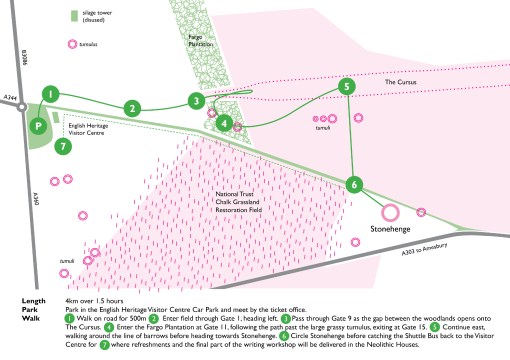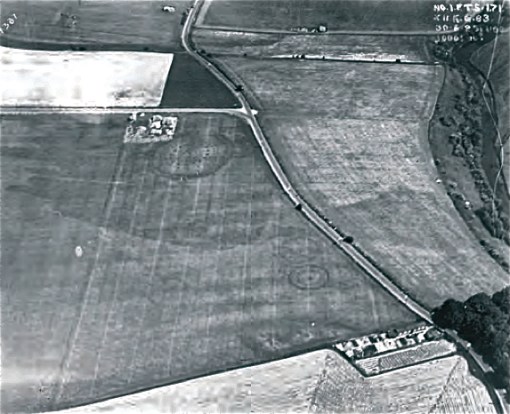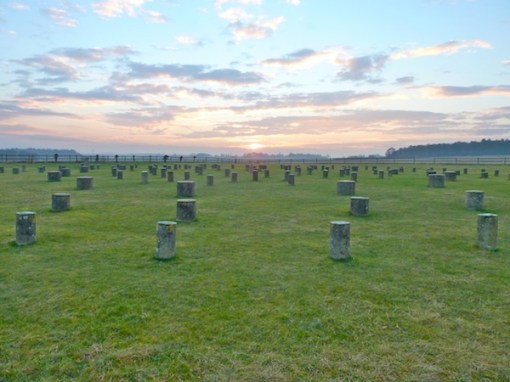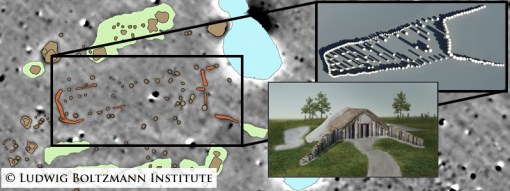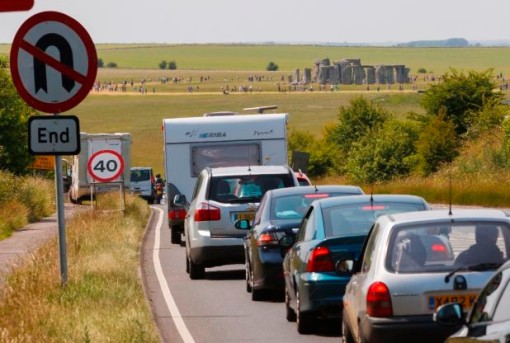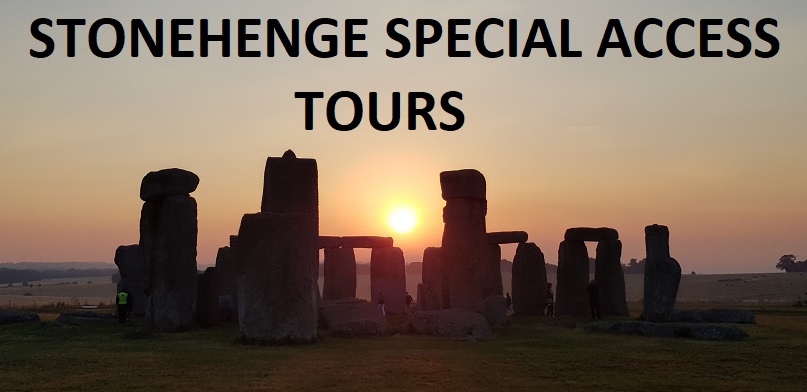Sarsen boulders lie scattered in substantial “drifts” across the landscape of the Marlborough Downs near Avebury.
By contrast, close to Stonehenge there are almost none. This is one of the reasons why most archaeologists believe that the large sarsens for the monument were not locally sourced.
There are, however, a few examples of substantial sarsens dotted about Salisbury Plain within a couple of miles of Stonehenge. And there are tantalising hints that others used to exist.
The most obvious, and easily accessible, is the Cuckoo Stone. This stone is about 2m long by 1.5m wide by 1.5m thick and lies in the field immediately west of Woodhenge.
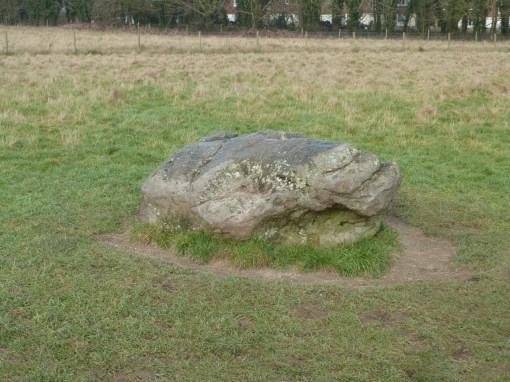
The Stonehenge Riverside Project excavated around the Cuckoo Stone in 2007 and discovered that the stone once had been set upright right next to the hollow in which it had originally formed.
Close by were two neolithic pits containing pottery worked flint, deer antlers and animal bones, dating to between 4000BC and 2000BC. A series of three burials were also found close by, dating to around 2000BC.
The stone remained a focus of activity right down to Romano-British times, and a small square wooden building – most likely a shrine – was built immediately to its southwest. Coins and pottery found in the ploughsoil date this to between 200AD and 400AD.
The other readily accessible sarsen is the Bulford Stone which lies in an arable field east of Bulford Village. It’s rather larger than the Cuckoo Stone at 2.8m long and again the excavation evidence shows that it too was once stood upright next to the hollow in which it formed.
It’s also closely associated with burials from the neolithic, the pottery found here dates to between 2300BC and 1900BC. The grave goods found were remarkable, including a flake of transparent rock crystal from either South Wales or the Alps and a “mini megalith” carved from a piece of limestone.

Lying in the northern ditch of a badly degraded long barrow within the Salisbury Plain military training area (and therefore not accessible to the public) are three more sarsen boulders.
They vary in size and – being half buried in the turf – are difficult to see, but the largest seems to be almost 2m long.
This long barrow was excavated by John Thurnam in 1864 who found an early neolithic burial on the original ground surface and an later Beaker burial just below the top of the mound.
Subsequent digging by the military in the early 20th century has almost obliterated the barrow but its outline can still be made out.
There is some debate about whether the sarsens lying in the ditch were originally part of the structure of the long barrow or if they were dragged there by farmers clearing fields at some later date. The stronger possibility is that they were part of the structure.
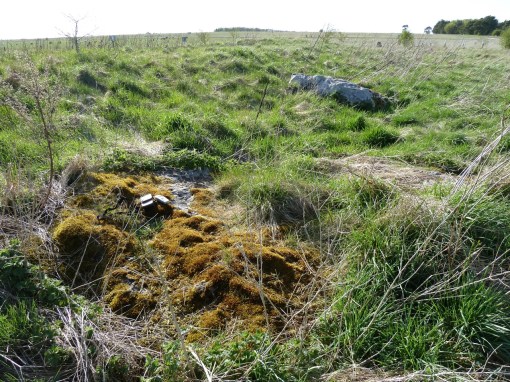
John Britton in his “Beauties of Wiltshire (1801)” says:
“About two miles north of Amesbury, on the banks of the Avon, is Bulford. Near this village are two large stones of the same kind as those at Stonehenge. One of them is situated in the middle of the river, and, as I am informed, has an iron ring fixed in it; but the waters being very high I could not see it.”
Old OS maps of the area show where this stone in the river once lay, but sadly it has now been removed and its present location is unknown to this author (please get in touch if you have any information about or pictures of it):
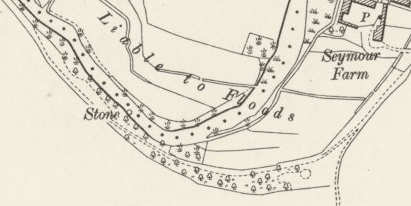
“…an interment which was lately discovered above Durrington Walls, by a shepherd, who in pitching the fold, found his iron bar impeded in the ground : curiosity led him to explore the cause, which proved to be a large sarsen stone, covering the interment of a skeleton”
There are other references to large local sarsens from antiquarian reports – one is mentioned by Sir Richard Colt Hoare in the early 1800s:
… and another by the Rev. Allan Hutchins from about the same time:
“In a field, not far from the road which leads from the Amesbury Turnpike into Bulford, is a Barrow of chalk facing the parish and standing by itself… When I came nearly to the virgin earth in this Barrow, my progress was impeded by an immense oval sand stone, underneath which was a skeleton, a beautiful lance head, and a handsome drinking cup”
Perhaps there are still more to be found. Certainly it seems that sarsen boulders of “large” or even “immense” size are not unknown in this part of Wiltshire so maybe the idea that the sarsens of Stonehenge were brought from the Marlborough Downs shouldn’t be accepted at face value.
Here’s a view from Beacon Hill on the east side of Amesbury:
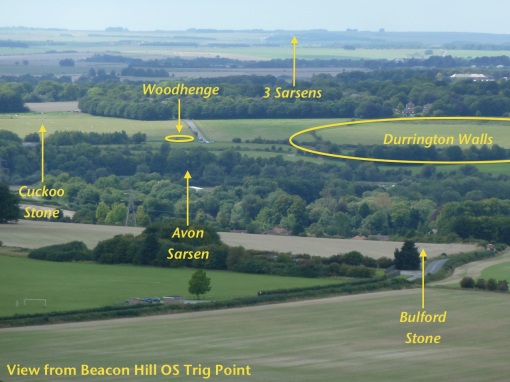
… and here’s an overhead view from Google Earth:
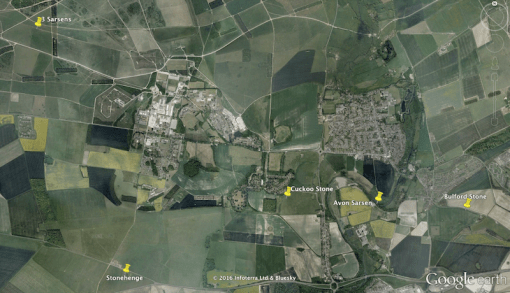
Curiously the Cuckoo Stone, the Avon Sarsen and the Bulford Stone all lie precisely on a straight line, with the Avon Stone being 1500 yards from the Cuckoo Stone and 1450 yards from the Bulford Stone.
But that’s another story……….
Want to learn more and here more Stonehenge stories? Hire a local expert tour guide or join a scheduled group tour
The Stonehenge Travel Company based in nearby Salisbury are considered the local experts and conduct guided tours of the Stonehenge landscape. Stonehenge Guided Tours include photo stops of Durrington Walls and Woodhenge and their private group tours service offer trips from London, Salisbury and Bath. Stonehenge Walks offer archaeological guided walking tours
Article by guest blogger and local Stonehenge historian Simon Banton
The Stonehenge News Blog
Follow us on Twitter and Facebook for all the latest Stonehenge News
http://www.Stonehenge.News

